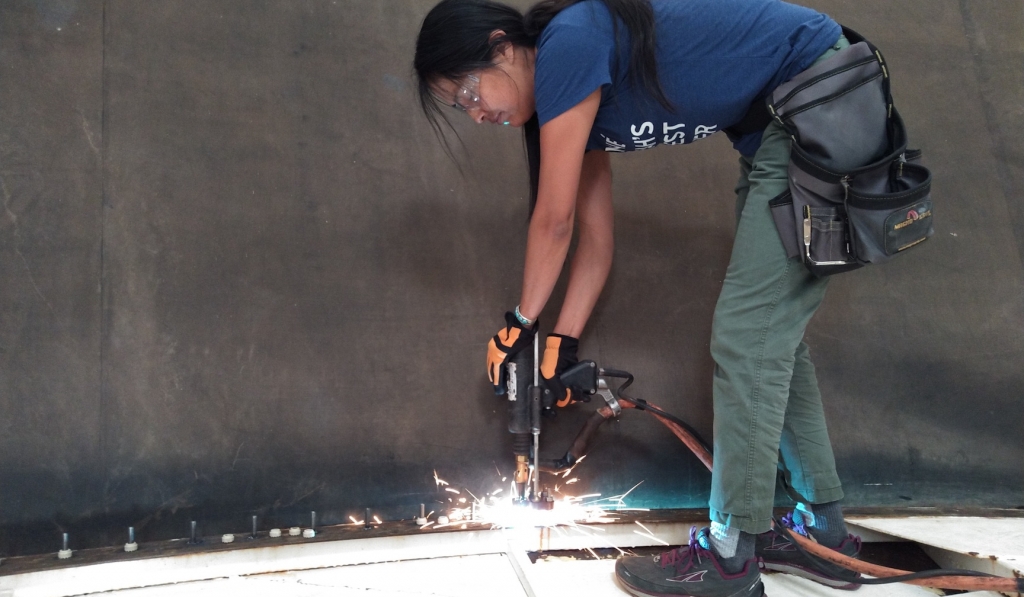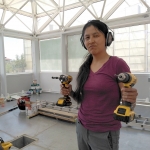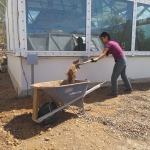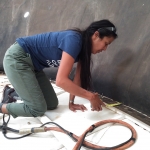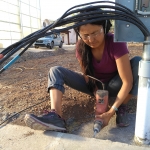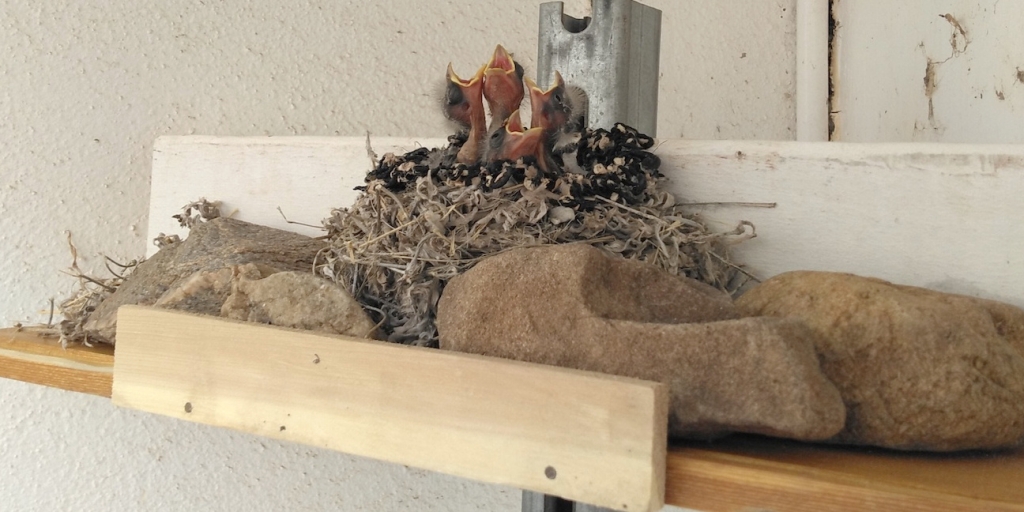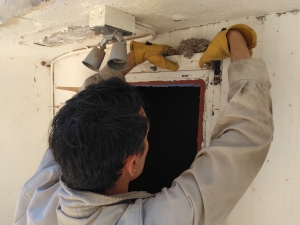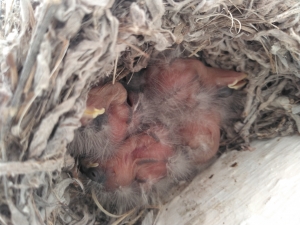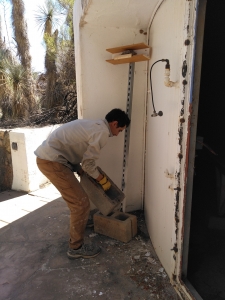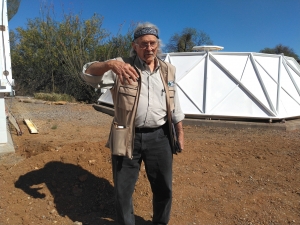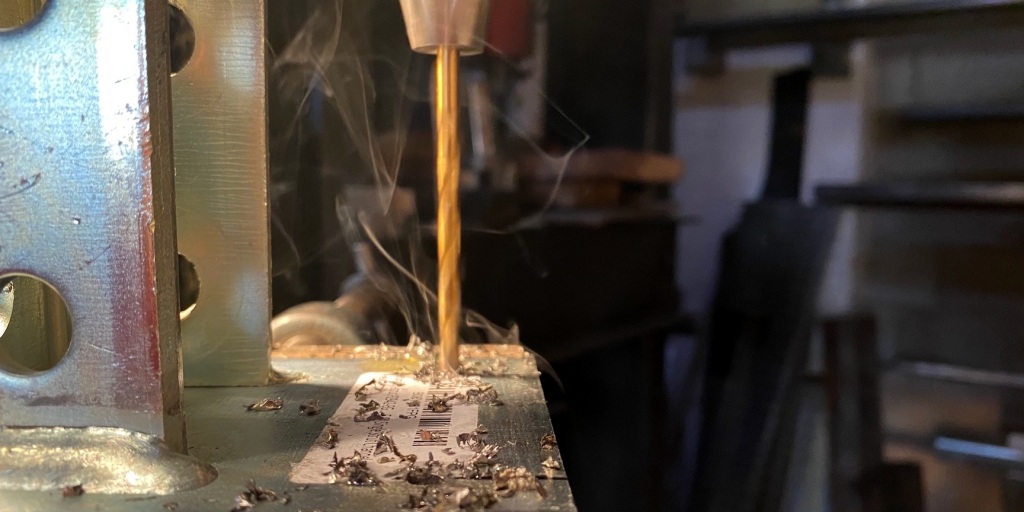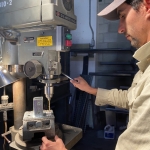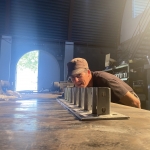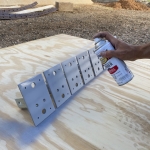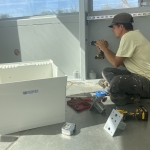SAM Construction – Preservation for the next generation
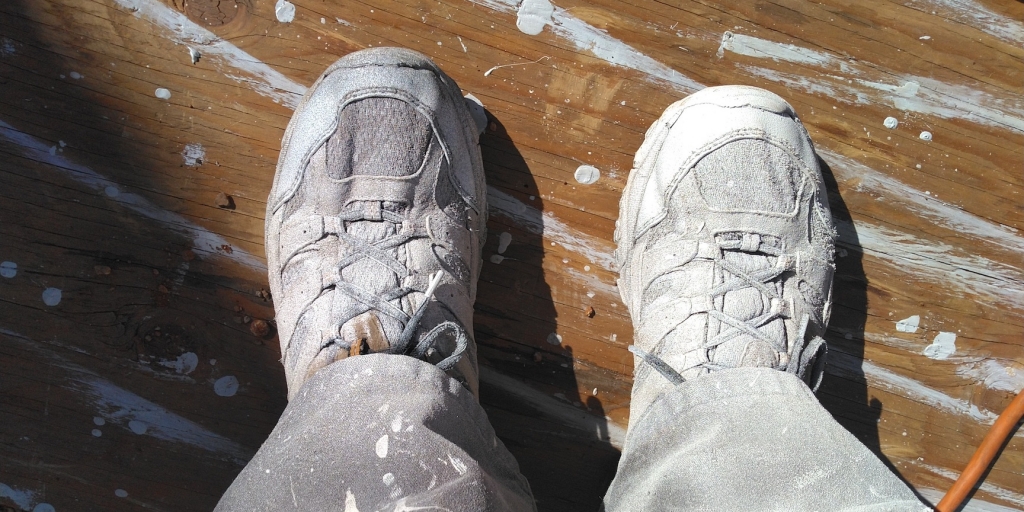
The Test Module was designed and built as a prototype for the Biosphere 2 in 1987. It was not likely conceived that 33 years later it would be repurposed, sealed up again as a hermetically sealed Mars habitat analog. While the greenhouse (controlled environment) structure itself seems to have held up quite well to the sun and rain of three decades, the lung suffered from a great deal of water collecting on top of the lung pan due to the upper shell of the lung not having been sealed.
The inner sheets of steel were only riveted to the underside of the visible steel ribs such that all precipitation quickly found its way inside, collecting in the bottom of the pan. A great deal of work has been applied to restore the pan, and the full exterior of the lung shell sanded (twice), washed, primed, and painted. The upper, triangular roof elements were coated in a 100% silicone elastomeric while the ribs on the side walls will be sealed with a silicone caulking.
This should inhibit the majority of continue corrosion and degradation over the coming years


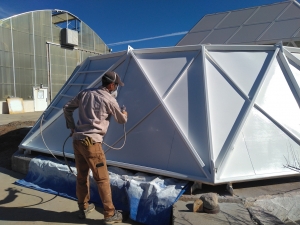
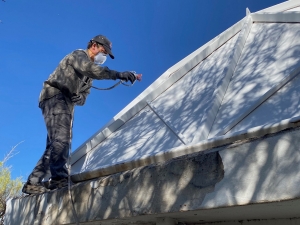
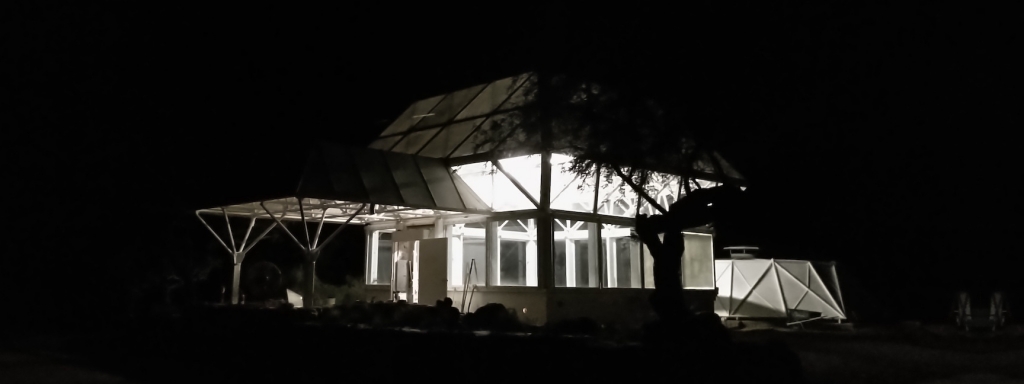
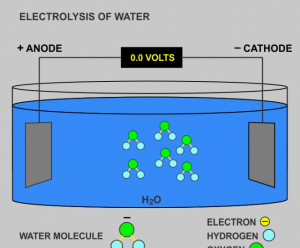 Science educator and writer Dan Heim answers the question, “I know there’s water ice on the Moon and Mars, and I get how it can be melted and used for drinking, but I don’t get how they can make rocket fuel out of it. — WJ, Provo, UT”
Science educator and writer Dan Heim answers the question, “I know there’s water ice on the Moon and Mars, and I get how it can be melted and used for drinking, but I don’t get how they can make rocket fuel out of it. — WJ, Provo, UT”